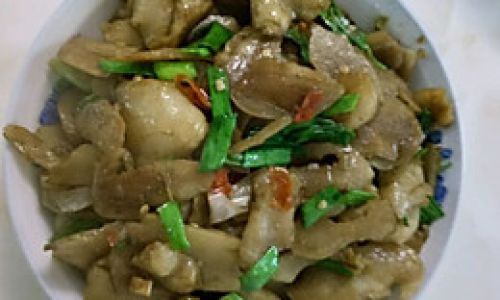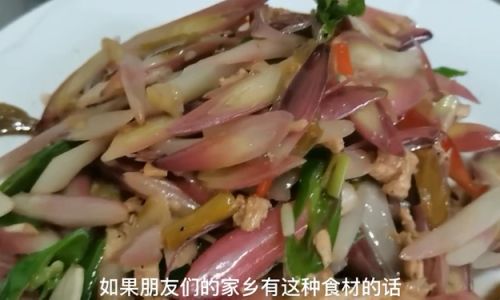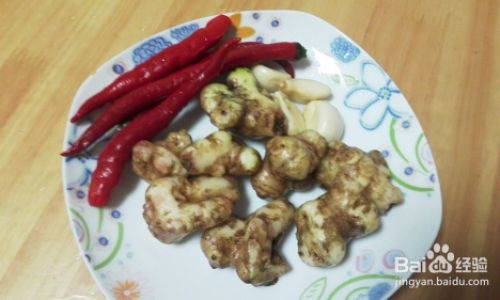Introduction
Kudzu root, scientifically known as Pueraria lobata, is a versatile plant native to East Asia, particularly China, Japan, and Korea. This plant has been used in traditional medicine for centuries due to its numerous health benefits, including its ability to alleviate menopausal symptoms, reduce alcohol intake desires, and improve blood circulation. Additionally, kudzu root is a popular ingredient in culinary dishes, offering a unique flavor and texture that enhances the overall dining experience. However, to fully harness the potential of kudzu root, it is crucial to know how to properly peel and preserve it to maintain its freshness and nutritional value. This article will delve into the optimal methods for peeling and preserving fresh kudzu root, ensuring that you can enjoy its benefits for an extended period.
Understanding Kudzu Root
Before diving into the peeling and preservation techniques, it’s essential to understand the basic characteristics of kudzu root. The root itself is long and cylindrical, with a tough, brownish-gray outer skin. Inside, the flesh is creamy white, often with a slight sweet taste and a fibrous texture. Kudzu roots are typically harvested in the fall when the plant’s energy is stored in the roots, making them the most nutritious.
When selecting fresh kudzu root, look for firm, heavy roots with smooth, unblemished skin. Avoid roots that have soft spots, cracks, or mold, as these are signs of spoilage. Freshness is key when it comes to kudzu root, as its nutritional and medicinal properties degrade over time.

Peeling Fresh Kudzu Root
Peeling kudzu root can be a bit tricky due to its tough exterior. However, with the right tools and techniques, the process can be both efficient and enjoyable. Here are the steps to peel fresh kudzu root:
-
Preparation:
- Begin by washing the root thoroughly under running water to remove any dirt or debris.
- Use a sharp knife to trim off any damaged or discolored parts of the root.
-
Peeling Tools:
- A vegetable peeler is a common choice for peeling kudzu root, but it may not be the most effective due to the root’s hardness.
- A sharp chef’s knife or a paring knife can be more effective, allowing you to apply more pressure and cut through the tough skin more easily.
-
Peeling Technique:
- Hold the root firmly with one hand, ensuring a stable grip to prevent slipping.
- Use the knife to make a shallow cut along the length of the root, just deep enough to break the skin.
- Peel the skin off in long strips, working your way around the root until all the skin is removed.
- Be careful not to cut too deeply into the flesh, as this can waste the edible part of the root.
-
Additional Tips:
- If the root is particularly large or tough, you may need to use a mallet or hammer to gently tap the knife through the skin, making the peeling process easier.
- Work in a well-ventilated area, as peeling kudzu root can release a strong, earthy aroma.
Preserving Fresh Kudzu Root
Once the kudzu root is peeled, it’s important to preserve it correctly to maintain its freshness and quality. Here are several methods for preserving fresh kudzu root:

-
Refrigeration:
- Wrap the peeled root tightly in plastic wrap or place it in an airtight container.
- Store it in the refrigerator’s crisper drawer, where humidity is higher, to help retain moisture.
- Fresh kudzu root can be stored in the refrigerator for up to two weeks.
-
Freezing:
- For longer-term storage, freezing is an excellent option.
- Slice the peeled root into smaller, manageable pieces or grate it into a fine shred.
- Place the pieces or shreds in a single layer on a baking sheet and freeze until solid.
- Once frozen, transfer the pieces to an airtight container or freezer bag, removing as much air as possible to prevent freezer burn.
- Frozen kudzu root can be stored for up to six months.
-
Drying:
- Drying kudzu root is another effective preservation method, especially if you plan to use it in powdered form for cooking or medicinal purposes.
- Slice the peeled root into thin pieces and lay them out on a drying rack or baking sheet.
- Use a food dehydrator or an oven set to a very low temperature (around 150°F or 65°C) to dry the slices until they are brittle and completely devoid of moisture.
- Once dried, store the kudzu root pieces in an airtight container in a cool, dark place. Dried kudzu root can be stored for up to a year.
-
Pickling:
- Pickling kudzu root can add a unique flavor and extend its shelf life.
- Prepare a pickling solution using vinegar, water, sugar, and spices like garlic, peppercorns, and dill.
- Pack the peeled and sliced root into a clean jar, pour the pickling solution over it, and ensure the root is fully submerged.
- Seal the jar and store it in the refrigerator. Pickled kudzu root can be enjoyed for several months.
Conclusion
Peeling and preserving fresh kudzu root may seem like a daunting task, but with the right knowledge and techniques, it can be a rewarding endeavor. By following the steps outlined in this article, you can ensure that your kudzu root remains fresh, nutritious, and ready to be used in a variety of dishes and remedies. Whether you choose to refrigerate, freeze, dry, or pickle your kudzu root, the key is to act quickly after peeling to prevent spoilage and maintain its optimal quality. With proper preservation, you can enjoy the unique benefits of kudzu root throughout the year, incorporating it into your diet and wellness routine for a healthier, more vibrant life.






0 comments